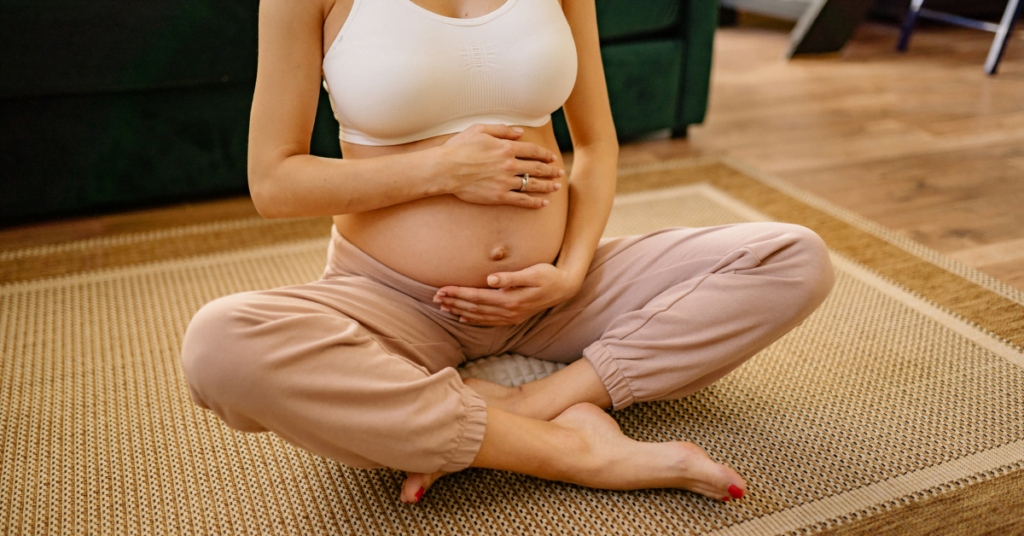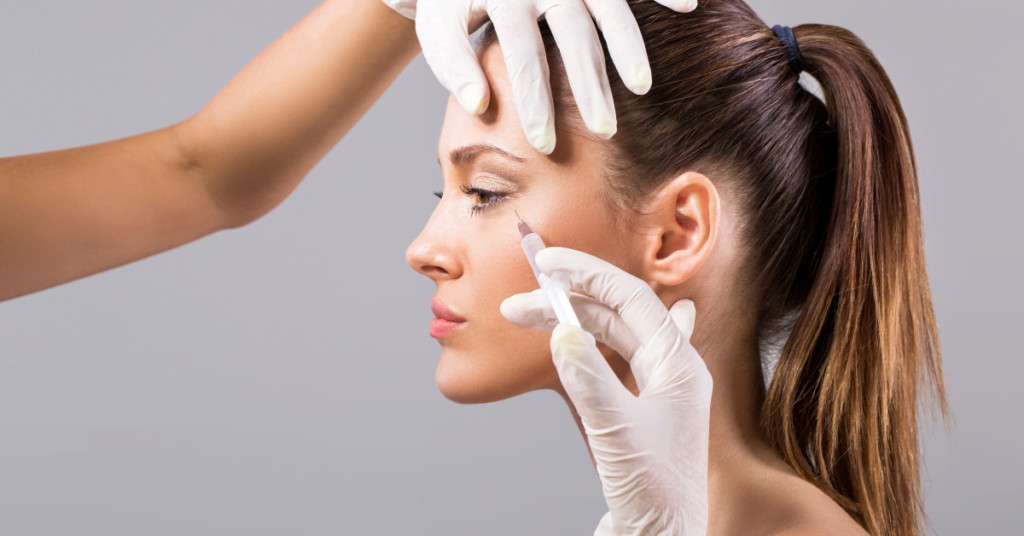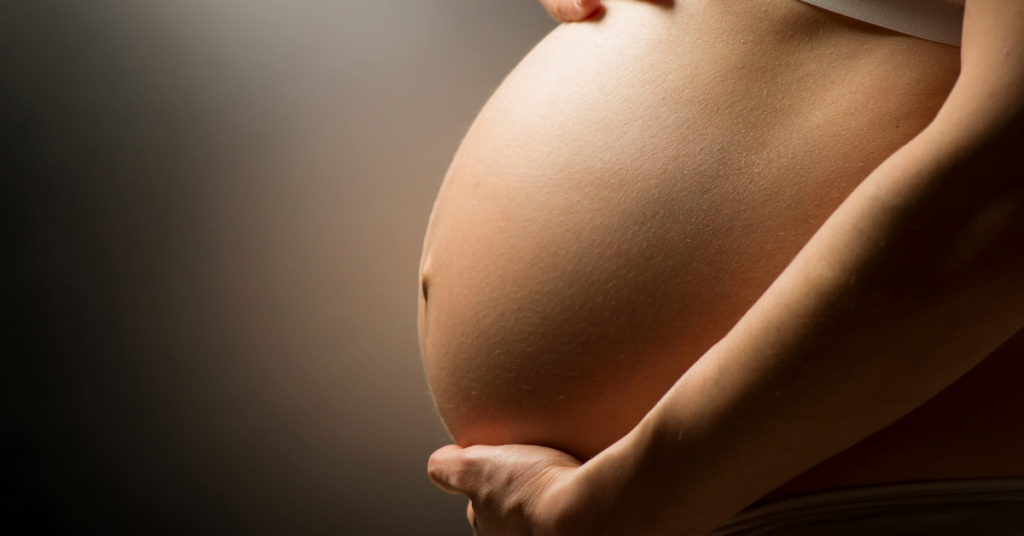In the ever-evolving world of medical aesthetics and cosmetic enhancements, Botox has undeniably cemented its status as a revered solution for addressing the common concerns of aging, such as smoothing out wrinkles and fine lines. However, as the miracle of life unfolds, and you find yourself in the cherished journey of pregnancy, the question of the safety of Botox during this transformative period becomes increasingly important. We comprehend the significance of making well-informed decisions, ones that not only impact your health but also the health and well-being of your precious baby. In this comprehensive guide, we aim to illuminate the intricate relationship between Botox and pregnancy, offering you the knowledge and insights necessary to navigate this crucial juncture in your life.
Understanding Botox: A Brief Overview
Before we delve into the specifics of Botox and its implications during the remarkable journey of pregnancy, let us embark on a journey of understanding, starting with the fundamental question: What is Botox, and how does it work?
What is Botox?
Botox, an abbreviated term for Botulinum Toxin, stands as a medical marvel extracted from the bacterium Clostridium botulinum. It has achieved widespread recognition for its unique ability to temporarily and selectively paralyze muscles, making it an exceptionally popular choice for diminishing the appearance of wrinkles and lines on the visage. Botox achieves this remarkable feat through a highly sophisticated mechanism of action.
The Science Behind Botox
Botulinum Toxin: The Mastermind
At the heart of Botox lies Botulinum Toxin, a neurotoxic protein with the unique ability to block nerve signals in muscles. This blockade temporarily paralyzes the treated muscles, providing a foundation for its aesthetic and therapeutic applications.
How Botox Works: A Precision Game
When administered by a trained medical professional, Botox injections target specific muscles in the treatment area. These injections introduce minuscule amounts of the neurotoxin, just enough to inhibit muscle contractions without causing harm. The result is a temporary relaxation of the treated muscles, which, in turn, smooths out wrinkles and fine lines on the skin’s surface.

Botox and Pregnancy: What Does the Research Say?
As you navigate the remarkable journey of pregnancy, your priorities naturally shift to encompass the well-being of both yourself and the precious life growing within you. It’s only natural to have questions and concerns, especially when it comes to topics that may impact your health and the health of your baby. In this segment, we will explore the intricate relationship between Botox and pregnancy by delving into the available research, offering you insights and guidance based on the current state of medical knowledge.
The Dilemma of Limited Research
One of the foremost challenges when discussing Botox and pregnancy is the scarcity of comprehensive, conclusive research on this specific topic. The constraints arise from ethical considerations, as conducting controlled experiments on pregnant individuals raises complex moral and medical questions. Therefore, it’s important to approach the existing body of knowledge with a nuanced perspective.
The Consensus among Medical Experts
While we acknowledge the limited research, it’s worth noting that the consensus among medical experts, including dermatologists, plastic surgeons, and obstetricians, leans towards caution regarding Botox during pregnancy. This caution stems from the lack of definitive evidence regarding the safety of Botox for both expectant mothers and developing fetuses.
Exploring Potential Risks
Despite the lack of conclusive data, medical professionals and researchers have proposed potential risks associated with Botox during pregnancy, which merit consideration:
1. Unpredictable Effects
Pregnancy is a time of significant physiological changes, including shifts in hormones and fluid balance. These changes can influence how Botox is metabolized in the body, potentially leading to unpredictable outcomes. What may have yielded predictable and satisfactory results before pregnancy may behave differently during this unique period.
2. Transmission to the Fetus
One theoretical concern is the possibility of Botox crossing the placental barrier and affecting the developing fetus. However, it is important to emphasize that, as of now, there are no documented cases of harm to the fetus directly attributed to maternal Botox injections.
3. Allergic Reactions
Pregnancy-induced alterations in the immune system can elevate the risk of allergic reactions to Botox or other substances used during the procedure. This underscores the importance of cautious consideration and consultation with healthcare professionals.

The Imperative of Informed Decision-Making
Given the complex landscape of limited research and potential risks associated with Botox during pregnancy, the emphasis falls on engaging in open and transparent discussions with your healthcare provider. These professionals possess the expertise and knowledge needed to offer personalized guidance tailored to your unique circumstances.
The Role of Your Healthcare Provider
Your healthcare provider is your most trusted source of information and guidance during pregnancy. They can help you weigh the potential benefits and risks associated with any medical procedure, including Botox. Together, you can make informed decisions that prioritize your well-being and the health of your baby.
Shared Decision-Making
Shared decision-making involves a collaborative process between you and your healthcare provider. It empowers you to actively participate in choices regarding your healthcare, taking into account your values, preferences, and the best available evidence. When it comes to considering Botox during pregnancy, engaging in shared decision-making ensures that your choices align with your unique circumstances and priorities.
Exploring Alternatives
For individuals who are pregnant or planning to conceive and are seeking ways to maintain a youthful appearance without the potential risks associated with Botox, there are alternative approaches to consider:
1. Topical Skincare
Topical skincare is a non-invasive approach to maintaining and improving the health and appearance of your skin. It involves the use of products applied directly to the skin’s surface, providing a host of benefits without the need for injections or surgical procedures. During pregnancy, when concerns about safety are paramount, topical skincare emerges as a promising alternative to procedures like Botox.
Hydration and Moisturization
One of the fundamental pillars of topical skincare is hydration. Properly hydrated skin is not only healthier but also more resilient and better at retaining its youthful appearance. During pregnancy, hormonal changes can lead to skin dryness and sensitivity. Topical skincare products, such as moisturizers enriched with ingredients like hyaluronic acid and glycerin, can help replenish and lock in moisture, keeping your skin supple and comfortable.
Addressing Fine Lines and Wrinkles
While Botox is renowned for its wrinkle-smoothing effects, certain topical skincare ingredients can also contribute to reducing the appearance of fine lines and wrinkles. Retinoids, derived from vitamin A, are known for their ability to stimulate collagen production, which can lead to smoother skin texture and a reduction in the visibility of wrinkles. However, it’s crucial to consult with your healthcare provider before using retinoids during pregnancy, as high concentrations may not be recommended.
Treating Skin Pigmentation
Skin pigmentation irregularities, such as melasma (commonly referred to as the “mask of pregnancy”), can occur due to hormonal changes during pregnancy. Topical skincare products containing ingredients like vitamin C and niacinamide can help mitigate the appearance of these pigmentary concerns. These ingredients work by inhibiting the production of melanin, the pigment responsible for skin discoloration.
Sun Protection
Sun protection is a cornerstone of any skincare routine, especially during pregnancy when the skin is more susceptible to pigmentation changes and sun-induced damage. Broad-spectrum sunscreen with an SPF of 30 or higher should be a daily essential. Look for formulations that are labeled “pregnancy-safe” or “dermatologist-approved” to ensure they are suitable for use during this sensitive time.
Gentle Cleansing
Proper cleansing is the foundation of effective skincare. During pregnancy, hormonal fluctuations can make the skin more sensitive. Opt for gentle, fragrance-free cleansers that remove impurities without stripping the skin’s natural moisture barrier. Avoid harsh exfoliants or scrubs, as they can irritate the skin.
Pregnancy-Specific Products
Some skincare brands offer products specifically formulated for pregnant women. These products are typically free from ingredients that are known to be potentially harmful during pregnancy, such as retinoids, salicylic acid, and certain essential oils. While these products can be convenient choices, it’s essential to review the ingredient list and consult with your healthcare provider to ensure they align with your unique needs and any skin concerns you may have during pregnancy.
2. Non-Invasive Procedures
Non-invasive cosmetic procedures have gained popularity for their ability to enhance one’s appearance without the need for surgery or invasive interventions. These treatments are considered generally safer during pregnancy, making them attractive options for expectant mothers looking to address aesthetic concerns.
Laser Therapy
Laser therapy is a non-invasive procedure that uses concentrated beams of light to target specific skin concerns. During pregnancy, lasers can be utilized to address a variety of issues:
- Pigmentation Irregularities: Hormonal changes during pregnancy can lead to skin pigmentation concerns like melasma. Lasers can effectively target and reduce these irregularities, promoting a more even skin tone.
- Spider Veins: The increased blood volume during pregnancy can sometimes lead to the appearance of spider veins, especially in the legs. Laser treatments can minimize the appearance of these veins, providing smoother-looking skin.
- Scar Revision: For individuals with scars from previous surgeries or injuries, laser therapy can help reduce their visibility, promoting skin that looks and feels smoother.
- Hair Removal: Laser hair removal is a popular choice for those looking to eliminate unwanted hair. It can be safely performed on various areas of the body.
Microdermabrasion
Microdermabrasion is a gentle exfoliation technique that improves skin texture and tone by removing the top layer of dead skin cells. This non-invasive procedure can be used during pregnancy to:
- Unclog Pores: Microdermabrasion helps clear pores, reducing the likelihood of acne breakouts, which some pregnant individuals may experience due to hormonal changes.
- Skin Smoothing: It effectively smooths the skin’s surface, providing a radiant and refreshed appearance.
- Scar Reduction: Microdermabrasion can help minimize the appearance of scars and imperfections, giving you smoother skin.
Chemical Peels
Chemical peels are non-invasive treatments that use specific chemical solutions to exfoliate the skin’s top layer. During pregnancy, certain types of chemical peels may be considered safe, particularly those with mild formulations. These peels can:
- Improve Skin Texture: Chemical peels can promote a smoother skin texture by removing dead skin cells and encouraging the growth of new, healthy skin.
- Reduce Fine Lines: Some chemical peels can help reduce the appearance of fine lines and wrinkles, providing a more youthful complexion.
- Treat Acne: Chemical peels can be beneficial for individuals dealing with pregnancy-related acne, as they help clear clogged pores and reduce acne blemishes.
Radiofrequency Treatments
Radiofrequency treatments use energy waves to heat the deep layers of the skin, stimulating collagen production and tightening the skin. These non-invasive procedures can be employed during pregnancy to:
- Skin Tightening: Radiofrequency treatments can help tighten loose or sagging skin, providing a more youthful and rejuvenated appearance.
- Cellulite Reduction: For those concerned about cellulite, radiofrequency treatments can help minimize its appearance.
Dermal Fillers
While many dermal fillers are not recommended during pregnancy due to limited safety data, some practitioners offer hyaluronic acid fillers, which may be considered safer. These fillers can:
- Restore Volume: Hyaluronic acid fillers can restore volume to areas like the cheeks and lips, helping you achieve a refreshed look.
Ultrasound Therapy
Ultrasound therapy, such as Ultherapy, is a non-invasive procedure that uses focused ultrasound energy to lift and tighten the skin. It can:
- Skin Lifting: Ultrasound therapy can lift and firm the skin on the face, neck, and décolletage, addressing concerns related to sagging.

3. Postpartum Rejuvenation
If you have a strong desire to resume Botox treatments, it is advisable to wait until after pregnancy and the breastfeeding period. Always consult with your healthcare provider before resuming any cosmetic procedures to ensure that the timing aligns with your health and well-being.
The Postpartum Journey
The postpartum period is a transformative phase marked by profound changes, both physically and emotionally. After the joyous arrival of your baby, it’s natural to turn your attention to self-care and postpartum rejuvenation.
Physical Recovery
Childbirth is a remarkable but demanding process that places strain on the body. Postpartum rejuvenation begins with physical recovery, addressing the changes and challenges that often accompany the postpartum period.
- Pelvic Floor Health: Childbirth can lead to pelvic floor issues, such as incontinence or pelvic organ prolapse. Pelvic floor exercises, also known as Kegels, can help strengthen these muscles and improve overall pelvic health.
- Abdominal Strengthening: Pregnancy stretches the abdominal muscles, which can lead to diastasis recti, a separation of the abdominal muscles. Physical therapy and targeted exercises can aid in abdominal muscle recovery.
- Scar Care: If you had a cesarean section or an episiotomy, proper scar care is essential. Keep the incision area clean and moisturized, and consult with your healthcare provider for guidance on scar management.
- Breast Health: For nursing mothers, breast health is paramount. Proper breastfeeding techniques, nipple care, and breast massage can contribute to your comfort and well-being.
Skin and Aesthetics
Pregnancy can bring about changes in your skin and body that may prompt a desire for postpartum rejuvenation.
- Stretch Marks: While stretch marks are a natural part of pregnancy, certain creams and oils can help hydrate the skin and minimize their appearance over time.
- Skincare Routine: Consider adjusting your skincare routine to address any changes in skin texture or pigmentation. Consult with a dermatologist for personalized recommendations.
- Hair Care: Hormonal fluctuations during pregnancy and postpartum can affect hair growth and texture. Adjusting your hair care routine can help manage these changes.
- Weight Management: Gaining weight during pregnancy is expected, but it’s essential to prioritize gradual and healthy postpartum weight management. Consult with a healthcare provider or nutritionist for guidance.
Emotional Well-Being
Postpartum rejuvenation extends beyond physical recovery; it encompasses emotional well-being as well.
- Emotional Support: Surround yourself with a support network that includes friends, family, and professionals who can provide emotional support during this transformative time.
- Mental Health: The postpartum period can bring about mental health challenges, such as postpartum depression or anxiety. Seek professional help if you experience symptoms or feelings of distress.
Aesthetic Treatments
For those seeking aesthetic enhancements, the postpartum period can be an opportune time for specific non-invasive treatments. Always consult with a qualified healthcare provider before pursuing any aesthetic procedures.
- Botox and Dermal Fillers: Botox and dermal fillers can help address fine lines and wrinkles that may have become more pronounced during pregnancy. Ensure that these treatments are administered by experienced practitioners.
- Laser Therapy: Laser treatments can target pigmentation irregularities and promote skin rejuvenation. Consult with a dermatologist to determine which laser treatment is suitable for your needs.
- Body Contouring: Non-invasive body contouring procedures, such as CoolSculpting or radiofrequency treatments, can help reshape and tone the body post-pregnancy.
Timing and Safety
Timing is crucial when considering postpartum rejuvenation. It’s advisable to wait until your body has adequately healed from childbirth, which can vary from a few weeks to several months, depending on individual factors and the type of delivery.
Additionally, always consult with your healthcare provider before pursuing any postpartum rejuvenation procedures, especially if you are breastfeeding. Some treatments may not be suitable during this time.

The Critical Role of Professional Guidance
When it comes to making decisions regarding Botox and pregnancy, the guidance of healthcare professionals is paramount. Pregnancy is a unique and complex journey, and while you may be familiar with the benefits of Botox, it’s crucial to understand that this journey introduces a host of new considerations.
The Limited Research Landscape
One of the primary reasons professional guidance is essential during pregnancy is the limited research available on the safety of Botox during this time. Ethical considerations and the potential risks involved make it challenging to conduct controlled studies involving pregnant women. Consequently, healthcare providers rely on existing knowledge, case reports, and an understanding of how Botox works in the body to provide guidance.
Individualized Assessment
Every pregnancy is unique, and so are the circumstances surrounding it. Healthcare providers play a critical role in conducting individualized assessments of your health, medical history, and specific needs. They consider factors such as your age, overall health, any existing medical conditions, the stage of your pregnancy, and your aesthetic goals.
Shared Decision-Making
Professional guidance encourages a shared decision-making process. This collaborative approach empowers you to actively participate in decisions regarding your healthcare. It ensures that your choices align with your values, preferences, and the best available evidence.
Alternative Options
Your healthcare provider can also discuss alternative treatments and non-invasive procedures that may be safer during pregnancy. These options can address aesthetic concerns without the potential risks associated with Botox.
Timing Considerations
In some cases, healthcare providers may recommend postponing Botox treatments until after pregnancy and the breastfeeding period. The timing of any cosmetic procedure should align with your health and well-being, as well as the needs of your baby.

The Role of Informed Decision-Making
In the complex landscape of Botox and pregnancy, the imperative is informed decision-making. Engage in open and transparent discussions with your healthcare provider, who can provide personalized guidance based on your unique circumstances.
Shared Decision-Making
Shared decision-making is a collaborative process that empowers you to actively participate in choices regarding your healthcare. It ensures that your decisions align with your values, preferences, and the best available evidence.
Embracing the Journey
The decision to explore cosmetic enhancements during pregnancy requires careful consideration and consultation with healthcare professionals. While the existing research landscape may not offer definitive answers, the overarching message remains clear: prioritize the health and well-being of both you and your precious baby.
Remember, the essence of beauty transcends superficial aesthetics; it resides in the strength, vitality, and love that accompany pregnancy and motherhood. If you choose to pursue cosmetic treatments, do so with prudence and under the guidance of qualified healthcare professionals.

Conclusion
In the intricate balance between beauty and the extraordinary journey of motherhood, the decision to undergo Botox treatments during pregnancy calls for a meticulous and thoughtful approach. While the existing research landscape does not provide unequivocal answers, the overarching message remains clear – prioritize health, both for yourself and your cherished bundle of joy.
Remember, the essence of beauty transcends superficial aesthetics; it resides in the resilience, vitality, and love that accompany pregnancy and motherhood. If you choose to explore cosmetic enhancements, do so with prudence, and always under the guidance of a qualified healthcare professional.
Your journey through pregnancy is a unique and beautiful chapter in your life. Embrace it with confidence, knowing that your choices are made with wisdom, care, and the well-being of both you and your precious baby at heart.


